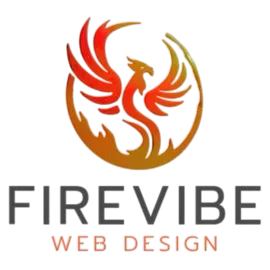
The Role of Icons in Web Design: How to Use Them Effectively
Icons are an integral part of modern web design, offering a way to convey complex ideas quickly and intuitively. They enhance user experience by improving navigation, reinforcing brand identity, and making content more engaging. Here’s a comprehensive guide on how to use icons effectively in web design.
1. Understand the Purpose of Icons
Improve Navigation and Usability
- Example: Icons can simplify navigation by visually representing functions or sections of a website. For instance, a magnifying glass icon is widely recognized as the search button, helping users quickly locate search functionality.
- Example: Icons can add visual interest and break up text-heavy content, making the website more engaging and easier to scan. For example, using icons alongside text in a feature list can make the information more digestible and appealing.
- Example: Custom icons can reinforce your brand’s unique style and personality. A tech company might use sleek, modern icons, while a creative agency might opt for more playful or artistic designs to reflect their brand’s ethos.
Opt for Clear and Recognizable Icons
- Example: Select icons that are universally understood to avoid confusion. For instance, a house icon typically represents the homepage, while a shopping cart icon denotes a shopping or checkout page.
- Example: Ensure that all icons on your site share a similar style, color scheme, and size to create a cohesive look. Consistency in icon design helps in creating a unified user experience and reinforces your brand’s identity.
- Example: Choose icons with straightforward designs that communicate their meaning at a glance. Overly complex icons can confuse users and detract from usability.
In Navigation Menus
- Example: Use icons in navigation menus to help users quickly identify and access different sections of your site. For example, a hamburger menu icon can indicate a collapsible navigation menu on mobile devices.
- Example: Incorporate icons in CTAs to make them more eye-catching and actionable. For instance, a “Download” button with an arrow icon can visually indicate that clicking the button will initiate a download.
- Example: Use icons to highlight key points in content sections, such as services or features. For example, a checklist icon next to bullet points can draw attention to important details.
- Example: Implement icons in forms and buttons to enhance functionality and user experience. For instance, an envelope icon can be used in a contact form to indicate the email field, while a calendar icon can signify a date picker.
Provide Alternative Text
- Example: Include descriptive alternative text for icons to ensure that users with visual impairments can understand their function. For example, use the alt attribute in HTML to provide a text description for each icon.
- Example: Ensure that icons have enough contrast against their background to be easily visible. This is especially important for users with color vision deficiencies.
- Example: Create icons in vector formats or high-resolution files to ensure they look sharp and clear on all screen sizes and devices. Icons should be scalable without losing quality or becoming pixelated.
Gather User Feedback
- Example: Test icons with real users to ensure they are intuitive and effective. Gather feedback on how users interact with icons and make adjustments based on their input.
- Example: Track how users engage with icons through analytics tools to assess their effectiveness. For instance, if a particular icon is not getting the expected clicks, consider redesigning it or repositioning it for better visibility.
- Example: Regularly review and update icons to keep them aligned with current design trends and user expectations. An outdated icon can make your website look less modern or less user-friendly.
Icons play a crucial role in web design by enhancing usability, visual appeal, and brand identity. By choosing clear and recognizable icons, integrating them strategically, ensuring accessibility, and continually testing and iterating, you can use icons effectively to improve the user experience on your website. Well-designed icons not only make navigation easier but also contribute to a cohesive and engaging web experience, ultimately helping you connect with your audience and achieve your design goals.
